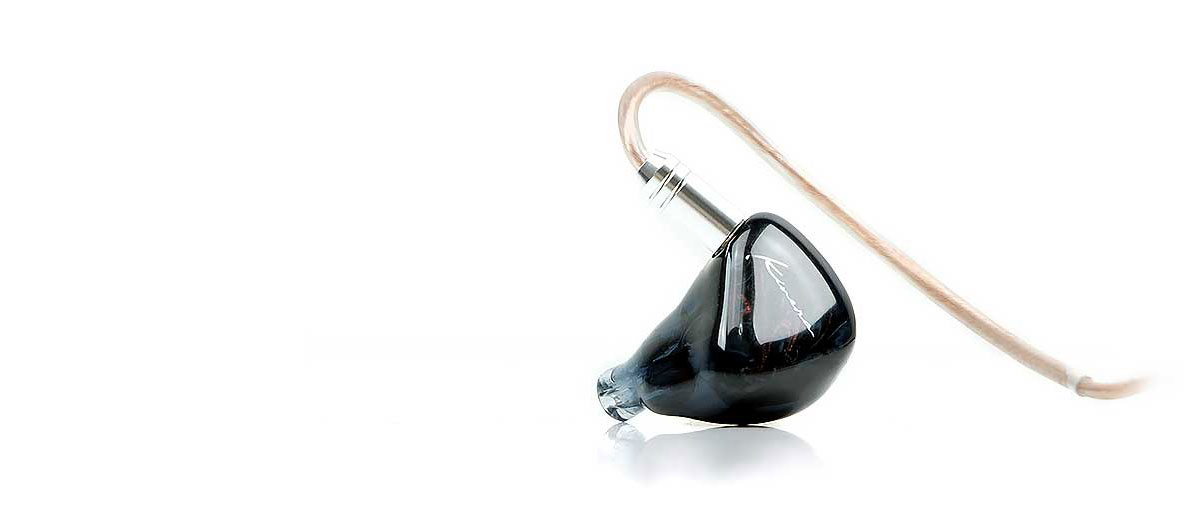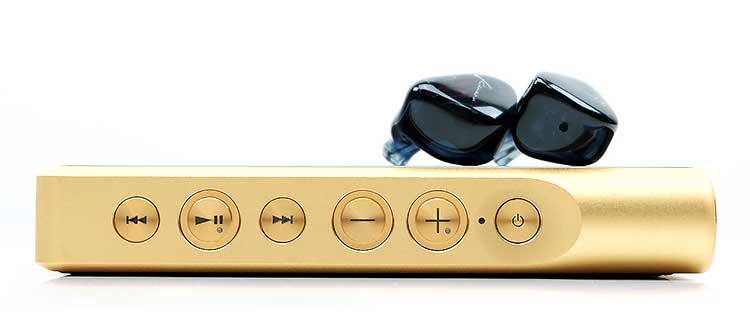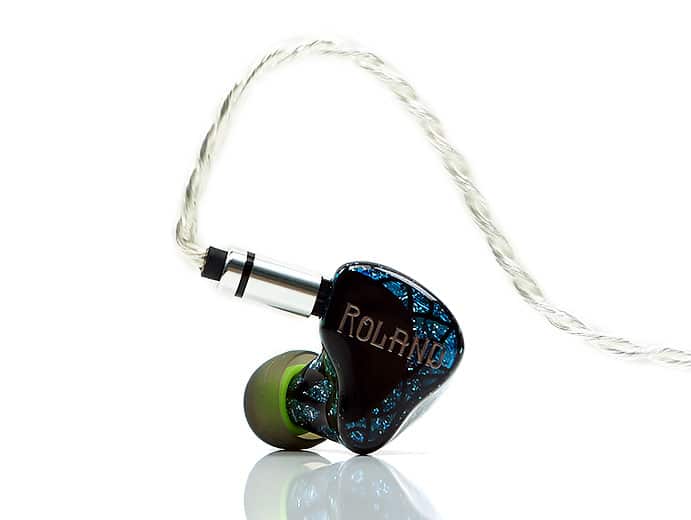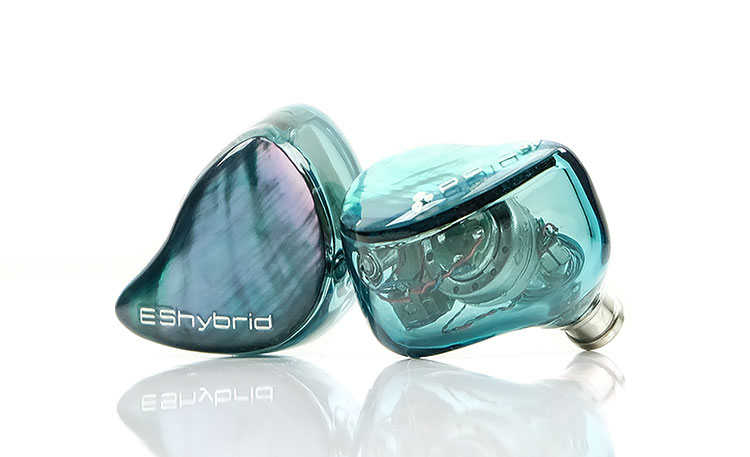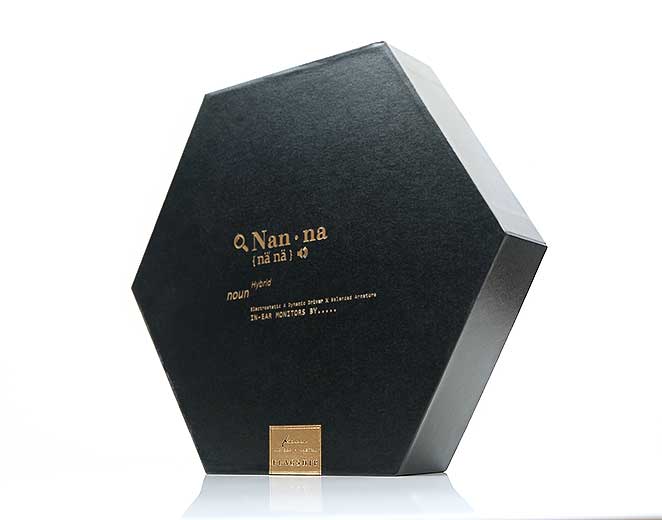Kinera Nanna Sound Impressions
Summary
The Kinera Nanna delivers a classic u-shaped FR with a bit of sub-bass emphasis over mid-bass warmth, a dropped lower-mids for instrumental staging depth and a forward mids-to-upper mids for vocal emphasis. The treble is clean, very articulate, and free of forced BA timbre and edginess. That means the electrostatic drivers can sparkle without getting too hot.
I actually find the treble tuning to be a little more elevated than the POLA39 and more impressive than the darker sounding Fearless Roland. You can hear it in the percussion with a slightly longer splash and a brighter edge on the Nanna compared to the wetter POLA39.
I have to say, manufacturers are starting to become a lot more aggressive with the stats tweeter treble tuning than last year. That is a good thing because these Sonion drivers do not seem to have that edginess BA timbre can deliver when pushed hard above 5k. They seem to retain a very nice level of refinement and ‘purity’.
The midrange instrumental timbre is neutral for me with that dropped lower-mids and forward but clean sounding upper-mids. Higher pitching vocals can sound ethereal rather than weighty and instruments are fast and clean rather than rich and rounded.
The PRaT is good, despite the hi-fidelity approach to the mids and treble. Kinera seems to have allowed the sub-bass a bit of free reign so you get that nice dynamic driver timbre down low and more than decent rumble when called upon.
Staging
Staging is tall, deep, and reasonably wide. It is really the depth and height of the Kinera Nanna staging that grabs your attention. The dynamic driver goes an excellent job of delivering some extension and reaches down below and the stats drivers to likewise in the upper treble. As a result, you get some nice contrast of power and ethereal airiness beyond the upper mids.
Upper mids are pronounced and forward so anything straddling from around 1k upwards is pushed forward. Lower-mids are dipped and tuck in behind vocals so staging is stretched ‘front-to-back’.
Combined with the airiness and a ‘light in tone’ instrumental note delivery, the Nanna actually does a really nice job with classical and chamber music. It never sounds closed in with an above-average level of separation that works well with stringed and percussion arrangements.
Bass
The Kinera Nanna dynamic driver has a sub-bass bias with a linear drop from around 50Hz into the lower-mids. I guess you can define it as more of an L-shape in its curve with more sub-bass presence than mid-bass warmth.
Not to say there is no warmth, it is just not the dominant characteristic and it doesn’t overly smooth out the midrange timbre. This is not as rich and full-bodied as something like the Fearless Audio Roland low-end. However, the Nanna DD has decent power, more than decent actually with a lovely dynamic driver timbre and slightly long decay to match.
It is important to note that a decent amp signal will tighten it up to a very good standard. The weaker the source the softer and more bloated the Nanna low-end sounds.
Mids
The Kinera Nanna’s lower-mids are relatively flat and slightly dipped in deference to the upper mids from 1k onwards which are lifted and more forward in their presence and positioning.
The low-end doesn’t actually bleed too much into the lower-mids so whilst they sound clean, articulate and nicely separated. The Nanna’s solid low-end fundamental does help with ensuring nothing sounds puny but the prevailing instrumental timbre is lighter and pacy rather than rich and planted.
Both male and female vocals have excellent clarity though again read above for that lightish overtone in how they are delivered. Male vocals have a hue of warmth on them so they sound a little smoother but also slightly less forward if chesty and lower-pitched. Female or mix/head vocals with falsettos that cut above 1k have more of an ethereal tone in their delivery.
The Nanna’s harmonic balance beyond 1k tends to pull a bit more from its stats treble driver than the dynamic driver power and warmth hence that clean but slightly lean sound. I do have to mention that despite that lightish slightly odd-harmonic bias, sibilance is not prevalent or abundant.
Treble
Excellent stuff and closer to how I want the electrostatic-infused treble to sound. There is nothing laid-back or dark with these Sonion dual tweeters but they are not overly forced either. The Nanna treble is articulate, well extended and more on the hi-fidelity side. It doesn’t sound overly wet nor is imbued with copious amounts of body but it is fast, clean and pure sounding.
Coming from the Roland, Trinity (brass), and the Wraith the Kinera Nanna is a welcome refresher and closer to the likes of the Khan and Elysium in terms of presence and energy. It will affect percussion timbre, however.
Percussion’s presence on the Nanna is quite forward, particularly on the 4-5k marker. Infusing that timbre with a clean pure upper treble harmonic characteristic contributes greatly to that light-bodied sound signature.
Synergy
Efficiency
The Kinera Nanna is rated at 60Ω and 110dB. As already noted, this is one of the more unusual specifications with most electrostatic hybrids content to ease up on the resistance and load up on the SPL. Typical SPL is normally around 100dB, for example, the POLA39 at 12Ω and 101dB.
Those specifications means the Kinera Nanna is not terribly efficient but the good news is that the Nanna is fairly impervious to high noise floors with no detectable hiss from our test DAPs including the FiiO M11, HiBy R6 Pro and the Cayin N6ii/E01 combo.
Switching to a smartphone, a Samsung Note 9, did throw up a vastly changed performance from those stats tweeters inside the Kinera Nanna. The treble sounded way too hard and brittle giving me the impression those Sonion drivers need more and better power than what the Note 9 can offer. I didn’t get that shrill sound from the above DAPs.
The high impedance rating also means you won’t find the Nanna being subjected to impedance skew from the original HiBy R6 10Ω output rating.
Current Draw
If you think that the Kinera Nanna 110dB SPL rating will save you then think again. The current draw was on the level of the POLA39 on the Cayin N6ii/E10 Class AB setting for example with both crudely volume-matched at around 70 unbalanced low-gain for easy listening.
As a point of contrast, the Fearless Roland was almost 25 steps lower on the same setup at about 55. The Roland has a less sensitive SPL of 106dB but a lower impedance of just 5.8Ω. Mind you, I think there is something in the Kinera approach as the higher impedance rated Nanna has a much better electrostatic performance compared to the Roland which is relatively dark.
Pairings
The Kinera Nanna plays better with a source that will tease out that above-average electrostatic presence in the highs whilst retaining body further down the FR. That does not necessarily mean you need a bright DAP, but rather a DAP that isn’t DSP or FPGA tweaked to fade off the top-end to produce a ‘natural sound’.
Of course, if you are treble sensitive then something like the HiBy R6 Pro which has that top-end fade is pitch-perfect. It does very well to emphasize that dynamic driver and offers a good level of richness to the Nanna mids and vocal performance.
That does come at a cost of slightly muted electrostatic treble compared to other DAPs such as the N6ii/E01 and FiiO’s M11 which offer more top-end extension. And, between the M11 and the N6ii/E01, I would pick the Cayin for the Kinera Nanna.
Whilst the M11 does a very good teasing out the Nanna treble it is a tiny bit more on the metallic and hard side compared to the better texture and more liquid overtone of the N6ii/E01. The N6ii/E01 bass is also tighter with less bloom and vocals are richer with the better body on the Nanna compared to the M11.
Our final test DAP, the Sony 1Z emphasized the low-end a fair bit on the Nanna but it was tighter than the R6 Pro or the M11. The treble was a bit digital for me, however, and not as fleshed out as the N6ii/E01 combo. There was some good presence but it could come across as a bit more brittle. Midrange resolution, vocal accuracy, and the general dynamic range performance were excellent, however.
Select Comparisons
Fearless Audio Roland
$958.55
Technical
The Roland, like the Kinera Nanna, is an electrostatic hybrid universal monitor. However, the specs are slightly different between the two. The Roland uses an additional BA driver for the mids (5-driver) and the Nanna is a 4-driver monitor using a single DD, single BA and dual Sonion electrostatic for the highs.
The design ethos is almost identical with both using heavily contoured custom universal acrylic hollow body builds and patterned colorful finishing. The Roland has a fairly bold aqua green and black web design so it stands out a bit more for me. The Nanna is subtler but no less intricate. Neither has a tip lip but neither has an issue holding the tips in place.
Cables are different between the two also with the Roland using a 1.2m 8-core 152 strand single-crystal silver-plated copper wire and the Nanna using a 1.2m copper 4-wire. One looks very silver and the other very coppery. The Roland 8-core cable is thicker and heavier but not as stiff. The barrels are better quality on the Nanna cable and it does feel the lighter of the two.
Performance
The Roland is rated with a ridiculously low 5.8Ω impedance and a more standard 106dB SPL. Compared to the Kinera Nanna’s 60Ω and 110dB SPL it should be easier to drive regardless of the gap in SPL.
That indeed bears out in reality with our test DAPs, the FiiO M11 and the Cayin N6ii/E01 with a substantial volume gap between the two at 20-25 steps less for the Roland on the N6ii. It is easier to drive by some margin compared to the Nanna.
Despite being much easier to drive the Roland is not really prone to hiss, however, the issue is in the tuning and I suspect that low impedance is the culprit for an underperforming electrostatic driver top-end.
Tuning
Apart from both have some solid extension and weight sub 100Hz, these two hybrid stats monitors sound very different indeed. The Roland is thicker, richer and generally darker than the Nanna.
It has a fair amount of roll-off beyond the upper mids suggesting the stats drivers are either purposely tuned to be forgiving or the power configuration is not correctly driving them to their optimal levels.
The net result is a lack of mids separation and air with a tendency to sound smeared and lacking in resolution compared to the Nanna. Certainly, the low-end of the Roland is fuller, more planted and warmer than the Kinera Nanna but it only results in an unbalanced sound signature for me.
The Roland timbre is quite warm and rounded in tone but there is almost no odd-harmonic counterbalance so percussion lacks bite. You could argue the Roland is suited to treble shy listeners and certainly, it is very smooth and forgiving with above-average power. However, I think that comes at the cost of useful staging instrumental separation and a lack of headroom pushing down.
Shozy & AAW POLA39
$950
Technical
The POLA39 is a universal monitor and priced $50 higher than the Kinera Nanna. It is also a reworked version of the original POLA released back in last 2018.
The configuration between the POLA39 and Kinera Nanna is slightly different with a key changeup in the lack of BA inside the POLA39. The POLA39 uses a single 10mm dynamic driver combined with dual Sonion electrostatic drivers whereas the Nanna uses 2 BA for the mids. That means the dynamic driver in the POLA39 covers both the lows and the mids.
In terms of design, they are very similar in shape and contouring. However, the POLA39 sports a stainless-steel nozzle whereas the Nanna is an all in one acrylic hollow body. The Nanna’s cable is also fairly basic compared to the POLA39’s impressive Tiburon Copper-Litz 4-wire build.
Performance
The Kinera Nanna has a huge 60Ω impedance rating which means it needs a quality amp signal. The SPL on paper at 110dB doesn’t suggest current is a factor but its optimal performance is not as good on weak sources. The POLA39 needs more current but will ride out a weaker source with a bit more ease at 16Ω.
On our test DAP, the Lotoo PAW Gold Touch I didn’t really pick up on a huge volume difference between the two and both sounded properly driven. Given the PAW Gold Touch’s 0.5W of juice I would say both are not suffering from a lack of good power.
On weaker sources such as smartphones, the Nanna sounded the more brittle of the two but neither sound ideal with the lack of power going to the stats drivers.
Tuning
Oh, these two are aiming for similar audiences but with a few differences that might tip someone one way or the other. The treble on both is excellent and I would say the Kinera’s has a shade more treble presence over the POLA39. You can hear it in the percussion with a slightly longer splash and a brighter edge on the Nanna compared to the wetter POLA39.
On the low-end, there are some differences also. The Kinera Nanna has more of a sub-bass elevation compared to its mids-bass so whilst it has a little warmth it is really more about power, rumble, and physicality when called upon.
The POLA39 pulls the sub-bass back a touch and is more in line with an elevated mid-bass. It, therefore, sounds punchy but carries a little more warmth into its lower-mids and vocal timbre than the Nanna.
You could argue the Kinera is the brighter of the two but it is really just a little more contrasting in its approach with slightly less mids body to both instruments and vocals. You do get the better fundamental, just a wispier lightish touch further on up.
DUNU DK-4001
$899
Technical
Until the soon to be launched Luna, the DK-4001 was DUNU’s flagship hybrid universal monitor. This is also a 5 driver but with no Sonion electrostatic configuration. The DK-4001 consists of a single 13mm beryllium coated dynamic driver, 2 x dual-tweeter Knowles SWFK-31736 for the highs and ultra-highs using a 2-way crossover.
Design-wise both are very different. The DK-4001 uses a very tough sandblasted matte-black zirconium liquid alloy shaped into somewhat of a more traditional form factor.
The Nanna is acrylic, universal custom contoured. It is more brittle but lighter and a more complete fit. The DK-4001 is very durable, stylish but relies more on the tips to do the sealing. The isolation on the Nanna is better, the comfort marginally superior also.
Have to give props to DUNU’s Noble cable and interchangeable termination system. This 1.2m cable consists of alternating strands of Furukawa sourced OCC Copper and DHC pure silver wire in a 4-wire build. It is bigger and heavier than the Kinera Nanna cable but of a much higher quality geometry and build.
It is really the interchangeable jacks on the DUNU Noble cable that steal the show. I do wish I could have gone balanced on the Nana because I think it performs better with most DAP balanced outputs.
Performance
The DK-4001 is rated at 32Ω and 112dB SPL compared to the Kinera Nanna’s 60Ω and 110dB SPL. And yes, that does mean the DK-4001 is the easier of the two to drive and it is also less current thirsty. You can blame that on the Sonion Electrostatic drivers inside the Kinera Nanna which are harder to power than dynamic or BA drivers.
However, the gap is not huge, not like the Roland vs the Kinera Nanna. On our test DAP, the N6ii/E01 combo, the DK-4001 ran about 5-6 steps or 2-3dB lower than the Kinera Nanna, and neither really sounded underpowered. Both of these monitors are equally resistant to background hiss on all the DAPs we tested. That includes the N5ii, FiiO’s M11/M15, and HiBy’s R6 Pro.
Tuning
The overall FR is not hugely different between these two and it comes more down to the solidity in the mids and treble tuning. For me, the DUNU DK-4001 is more coherent as in more difficult to separate out the different driver groupings. The timbral difference are harder to pick out from top to bottom on the DK-4001.
Even though, like the Kinera Nanna, it has a weighted sub-bass delivery the elevation is not as big and the dip into the lower-mids not as deep. That transition is a shade smoother with a bit more warmth traveling up into the lower-mids. Instrumental notes on the DK-4001, therefore, sound a little fuller, smoother and richer in texture though the Nanna separation and pace are more convincing.
Vocals are a little further forward and cleaner on the Kinera Nanna as are the upper mids in general with more of a pristine and ethereal tone compared to the wetter more rounded DK-4001 timbre. Much of that has to do with the treble tuning on both monitors.
The DK-4001 upper BA drivers are a little more relaxed in their tuning compared to the Kinera Nanna’s stats drivers. They sound smooth, with more body but not as airy or extended in their presence nor are they as articulate.
Our Verdict
I think Kinera gets it to be honest, or at least it sounds like they do with the Kinera Nanna. The articulate electrostatic drivers actually sound like they are being driven properly, particularly if you throw a bit of power at them with a decent DAP.
There is nothing laid back about the Kinera Nanna sound but neither does it sound edgy or harsh with just a slight hint of upper-most treble fade to keep it from sounding brittle. The effect is excellent with plenty of depth and airiness in its height but with a light-touch tone and ethereal quality to its mids instrumental and vocal timbre.
There is a lot of interesting value-for-money ChiFi interpretation of this originally very expensive hybrid fusion of drivers coming out in 2020. This is one of the better ones and worth checking out if you get a chance.
Kinera Nanna Technical Specifications
- Impedance:- 60 ohms
- Sensitivity:- 110dB at 1mW
- Frequency Response:- 5Hz-50kHz
- 2-Pin 0.78mm Connector Copper Wire




